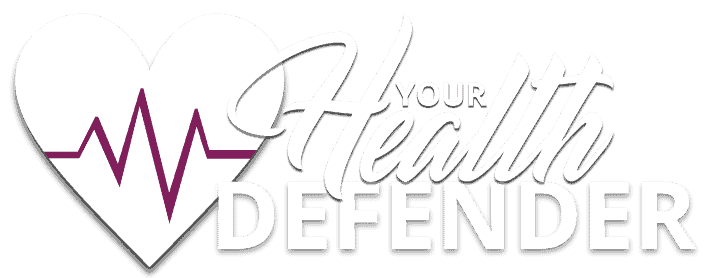Let’s Talk All Things Natural Home Birth
If you’re considering a planned home birth, you likely have a boatload of questions.
- Do I need a doula or midwife?
- Is this safe?
- Do I need a backup plan, and if so, how do I create a backup plan
- What are the differences between a natural home birth and a hospital birth?
Wondering which option is the best for your labor and delivery? Have no fear! Your Health Defender is here!
A planned natural home water birth can be a very rewarding experience, however, it’s a big decision. You should work closely with your doctor to make the right and most informed decision for you and your family!
So, let’s get into the home birth pros and cons, as well as everything in between.
Home Birth Pros
- Lower cost
- Increased control and freedom in the birthing process
- Familiar and comfortable environment
- Free of medical intervention, including labor augmentation, fetal heart rate monitoring, pain medication, labor induction
- No need for transportation
- Free of dissatisfaction with hospital care
- Cultural or religious benefits
Home Birth Cons
- Research shows that a planned natural home birth comes with a higher risk of infant seizures and deaths than hospital births
- Insurance may not cover any costs
- Messiness
- You could require emergency transport to a hospital
When is a planned home birth not recommended?
According to the American College of Obstetricians and Gynecologists, there are cautions against a home birth if:
- You have had a C-section before
- Your baby doesn’t go into a position that would allow a headfirst delivery
- You are pregnant with more than one child
What might cause a hospital transfer?
If complications arise during a natural home water birth, you may need to be transported to a hospital for treatment or monitoring.
Your healthcare provider may recommend such a transfer to the hospital if any or multiple of the following arise:
- Bleeding
- Need for pain relief
- High blood pressure
- The baby is not positioned for a headfirst delivery
- Complications are encountered such as umbilical cord prolapse (umbilical cord drops into your vagina before your baby), placental abruption (placenta detaches from the lining of the uterus before delivery)
- Labor is not progressing
- Traces of meconium are found in your amniotic fluid
- Baby shows signs of distress (abnormal heart rate before delivery, or signs of a medical condition or difficulty breathing after birth)
- Conflicts with delivering the placenta whether that be that it doesn’t deliver at all or doesn’t deliver completely
How can I reduce the risks of a planned home birth?
Several factors can reduce the risks of complications, including:
- Access to a practicing obstetric doctor
- Assistance from a certified nurse-midwife
- A solid plan for emergency transport to the nearest hospital and birthing center
What preparations can I make to ensure these risk reduction measures?
- Creating your birth plan: Ask yourself the following questions, and define the answers to create a plan for your natural home water birth. Do you want to labor in a bathtub? Will you use any specific methods to cope with pain? If so, what are the methods? Do you plan to breastfeed your baby immediately after delivery? Make sure you discuss this plan with your healthcare provider! Ask about necessary supplies like protective coverings for the mattress and floor.
- Choosing the trained healthcare provider: Choose a certified nurse-midwife, certified midwife, or midwife whose education meets the requirements, or a doctor who practices within a regulated and integrated healthcare system. You should make sure he or she has access to consultations with specialists or doctors at a collaborating hospital and birthing center. Do your homework and make sure you find the right person and team. The American Academy of Pediatrics recommends having one trained person whose primary responsibility is to care for your newborn.
- Preparing for hospital transfer: Discuss with your provider what symptoms and signs may necessitate heading to the hospital for a transfer hospital birth, as well as how that will affect your birthing plan. It is recommended that your home or planned birth location be 15 minutes or less away from a hospital. Note: It is also highly recommended to ensure that the hospital has 24-hour maternity care at their birthing center. Make sure your transportation arrangements are planned and accounted for ahead of time. Plan ahead with your care provider to make arrangements with the nearby hospital of choice to ensure that you can be promptly transferred and cared for should it be necessary.
What costs are involved with a home birth?
As mentioned above, your insurance policy may not cover any associated costs of your home birth. Check with your insurance provider to get more information. You will definitely need to work with a midwife and/or trained medical provider, and those costs vary widely based on location. Check and plan for those costs ahead of time as well as the cost of your supplies.
What supplies are required for a home birth?
Giving birth at home requires preparation. Ensuring your space is private and peaceful is incredibly important, and if you have older children, you should decide ahead of time if you’ll want them to be at home or not.
You should also discuss the preparations and supplies for your home birth with your midwife or doctor because there may be items you need beyond this list. However, a basic list of supplies includes:
- A peri bottle
- Absorbent pads with waterproof bottoms
- Bulb syringe
- Pads for postpartum use
- Hibiclens
- Alcohol prep pads
- Variety of gauze pads
- Lubricant
- Sterile gloves
- Cord clamps
- Povidone, an iodine prep solution
- Antiseptic/antimicrobial soap
Additional items, depending on your plan, may include:
- Trash bags
- Waterproof mattress cover
- Basin for the placenta
- Fresh sheets
- Clean receiving blankets
- Washcloths and towels
One of the biggest pros of delivery at home is your freedom! You very well may want to look into other aids such as a birth ball or birthing pool, music, aromatherapy, food or drinks, taking warm showers or baths, etc.
The Most Important Part Of This Blog
At the end of the day, heed your healthcare providers’ recommendations and do what is best for you and your baby. If you are expecting multiples, your pregnancy is considered high-risk, or there have been complications during your prenatal adventure, please make sure to put you and your baby’s health FIRST! Stay in your lane, don’t compare to others, and focus on health first and very foremost.
To Wrap It Up
You have the right to make an informed decision about where you deliver based on the main home birth pros and cons! Always keep in mind that the need to transfer you and your baby from your home to a hospital could arise. The delayed care is definitely something to carefully consider, but I’ve provided you with a full list of home birth pros and cons in order to make a decision that best suits YOU!






